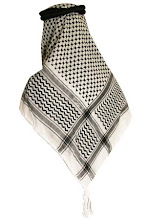Loci As Architecture and The "Memory Palace"
In ancient advice, loci were physical locations, usually in a familiar large public building, such as a market or a temple. To utilize this method, one walked through the building several times, viewing distinct places within it, in the same order each time. After a few repetitions of this, one should be able to remember and visualize each of the places in order reliably. To memorize a speech, one breaks it up into pieces, each of which is symbolized by vividly imagined objects or symbols. In the mind's eye, one then places each of these images into different loci. They can then be recalled in order by imagining that one is walking through the building again, visiting each of the loci in order, and viewing each of the images that were placed in the loci, thereby recalling each piece of memory or speech in order.
In all mnemonic arts, advice is given that the mental places should be well lit, clearly set out in a particular order, at moderate intervals apart. The more architectural elaborations of rooms, passages and niches it has the better — in the sixteenth century, the sequence of architectural loci was sometimes called a "Memory Palace." But the loci were also to be grouped or "chunked" in "brief" sets of items, no more than what the mind's eye can encompass in one glance: this is the medieval equivalent of what we now call a "working memory" (Carruthers, 1990, Dudai 2002). Loci can actually be used to remember more than one set of ordered things. The images may be replaced by new ones--the loci are the "wax tablet" or "page" on which one writes the images, as one can write with a stylus onto a more permanent surface. The characteristics of the images one uses are very important. They should be unusual, vivid and striking, and it is good if they have emotional content as well. Humorous, obscene or sacrilegious ones (as they may seem to us) are often used. The goal is to make a uniquely memorable picture (Frances Yates 1966, Small 1997).
Because one can readily imagine moving through a memory structure starting at some arbitrary point, one can easily recall the list starting from any point in it, and even recall it easily in reverse order. Prodigious memory feats have been attributed to this method. The art of memory is an aid to composition and rhetoric, not an aid to rote memorization. In the Middle Ages, it was carefully distinguished from rote, for with rote memory, one must always go in the same order. The use of loci within a system produced a sort of memory which one can enter from an infinite number of places, and thus one can work with it-- change it about, shuffle, go backwards or forwards or jump around (Carruthers 1990; Carruthers, Ziolkowski 2002).
Contemporary Usage
A reference to these techniques survives to this day in the common English phrases "in the first place", "in the second place", and so forth.
All top memorizers today use this technique to a greater or lesser degree. Contemporary memory competition was initiated in 1991 [1] and introduced to the USA in 1997 [2]. Part of the competition requires committing to memory and recalling a sequence of digits, 2-digit numbers, alphabetic letters, or playing cards. In a simple method of doing this, contestants, using various strategies well before competing, commit to long-term memory a unique vivid image associated with each item. They also have committed to long-term memory a familiar route with firmly established stop-points or loci. Then in the competition they need only deposit the image that they have associated with each item at the loci. To recall, they retrace the route, stop at each locus and observe the image. This they then translate back to the associated item. Memory champions elaborate on this by combining images. Eight-time World Memory Champion Dominic O'Brien[3] advocates this technique. His name for it is The Journey Method. The 2006 World Memory Champion, Clemens Mayer from Germany, used a 300-point-long journey through his house for his world record in "number half marathon", memorizing 1040 random digits in a half hour.
Using this technique a person with ordinary memorization capabilities, after establishing the route stop-points and committing the associated images to long-term memory, with less than an hour of practice can remember the sequence of a shuffled deck of cards. The world record for this is held by Ben Pridmore at 26.28 seconds[4].
The technique is taught as a metacognitive technique in learning to learn courses. It is generally applied to encoding the key ideas of a subject. Two approaches are; 1. Link the key ideas of a subject and then deep-learn those key ideas in relation to each other. 2 Think through the key ideas of a subject in depth, re-arrange the ideas in relation to an argument, then link the ideas to loci in good order. It has been found that teaching such techniques as pure memorization methods often leads students towards surface learning only. Therefore, it has been recommended that the method of loci should be integrated thoroughly with deeper learning approaches.
Enjoy brain memory of 100 Giga Bytes
Wassalaam




No comments:
Post a Comment